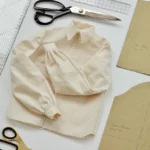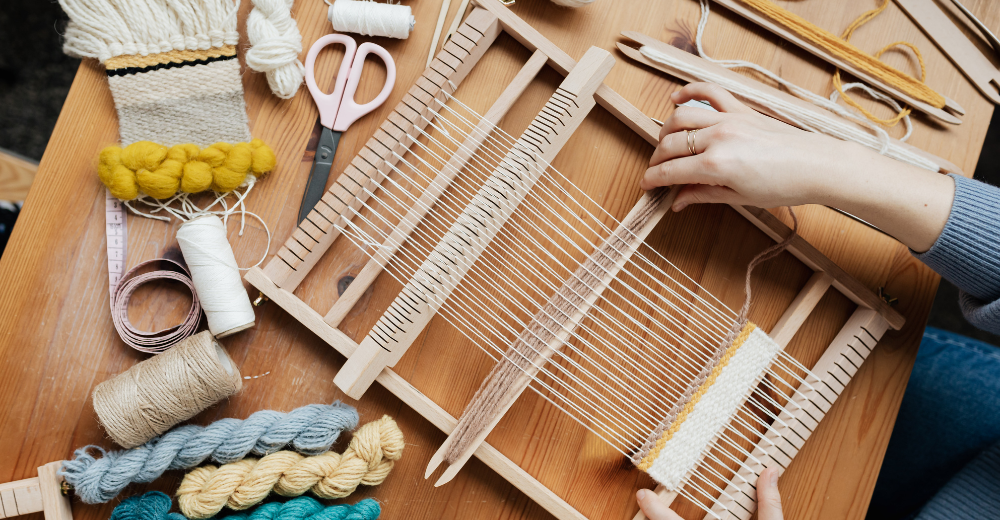In our fast-paced world, many people are seeking ways to slow down, reconnect with themselves, and find calm amidst daily stresses. One surprising and increasingly popular way to achieve mindfulness is through the ancient craft of weaving. Weaving, with its rhythmic, repetitive motions, offers a unique way to meditate, relax, and focus the mind. This practice not only results in the creation of beautiful textiles but also fosters a sense of inner peace.
1. The Mind-Body Connection in Weaving
Weaving engages both the mind and the body, making it a holistic activity that encourages mindfulness. The physical process of weaving — threading the loom, passing the shuttle, and beating the weft into place — requires focused attention, but not to the point of overthinking. This gentle concentration helps calm racing thoughts and brings the weaver into the present moment, creating a meditative experience similar to practices like yoga or tai chi.
Flow State:
As the weaver becomes absorbed in the act of weaving, they often enter a state of “flow,” where time seems to disappear, and the mind is fully engaged in the creative process. This flow state is known to reduce stress, promote relaxation, and enhance feelings of well-being.
2. Repetition as a Form of Meditation
The repetitive nature of weaving, with its constant back-and-forth motion, mirrors the structured repetition found in other meditative practices, such as counting breaths or chanting mantras. This repetition can have a calming effect, helping to quiet the mind and release tension. With each pass of the shuttle, the weaver becomes more attuned to the rhythm of the craft, creating a sense of harmony and balance.

Mindful Focus:
Weaving encourages the practitioner to focus solely on the task at hand, letting go of distractions and worries. As thoughts arise, the weaver can gently return their attention to the motions of weaving, much like returning to the breath in meditation. This process of refocusing helps to train the mind in mindfulness.
3. Weaving as a Creative Outlet for Emotional Expression
Weaving offers a creative outlet that allows the weaver to express their emotions through color, texture, and pattern. This form of creative expression can be deeply therapeutic, helping individuals process feelings or work through personal challenges. By channeling emotions into a tangible work of art, weaving becomes a tool for emotional healing and self-reflection.
Personal Symbolism:
Many weavers choose to imbue their work with personal meaning, using symbols, colors, or motifs that reflect their inner journey. This adds another layer of mindfulness to the practice, as each choice made during the weaving process becomes an intentional act of self-expression.
4. The Benefits of Weaving for Mental Health
In addition to its meditative qualities, weaving has been shown to have several mental health benefits. Research suggests that engaging in creative activities, like weaving, can reduce symptoms of anxiety and depression, improve cognitive function, and enhance overall mental well-being. The simple act of creating something with one’s hands can also boost self-esteem and provide a sense of accomplishment.
Stress Relief:
Weaving offers a productive way to manage stress. By focusing on the tactile experience of working with fibers and the repetitive nature of the craft, weavers can find respite from the pressures of daily life, leaving them feeling more grounded and centered.
5. Weaving in a Group Setting: Building Community
While weaving is often a solitary activity, it can also be a powerful way to connect with others. Group weaving sessions or workshops provide an opportunity for individuals to share their craft, learn from one another, and build a sense of community. The collective act of weaving together fosters a shared mindfulness experience and can strengthen social bonds.
Supportive Environment:
Many weaving communities emphasize support, patience, and collaboration, creating a nurturing environment where crafters can learn at their own pace. These settings can be particularly beneficial for those seeking connection and a sense of belonging.
6. Tips for Starting a Mindful Weaving Practice
If you’re interested in exploring weaving as a meditative practice, here are some tips to get started:
Start Small:
Begin with a simple loom or weaving project that doesn’t require complex techniques. This allows you to focus on the meditative aspects of weaving rather than feeling overwhelmed by the process.
Create a Calm Space:
Set up your weaving area in a peaceful part of your home, free from distractions. Play calming music or enjoy the natural sounds of your surroundings to enhance the meditative experience.
Focus on the Process, Not the Outcome:
While the finished product is important, weaving as a meditative practice is about enjoying the journey. Let go of perfectionism and embrace the imperfections that arise during the weaving process.
Breathe and Weave:
Incorporate deep, mindful breathing into your weaving practice. Pay attention to your breath as you pass the shuttle back and forth, creating a rhythm between your breath and your motions.
7. Conclusion
Weaving, with its rhythmic movements and creative possibilities, is much more than a craft — it can be a deeply meditative practice that nurtures the mind, body, and soul. Whether you’re an experienced weaver or a complete beginner, weaving offers a unique way to slow down, practice mindfulness, and connect with the present moment. By engaging in this ancient art form, you not only create beautiful textiles but also cultivate a sense of inner peace and balance in your life.










